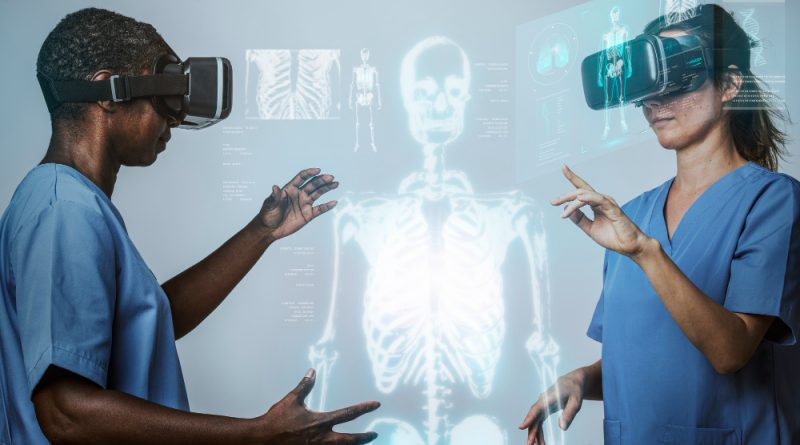Deacon Farrell: Exploring the Applications of Quantitative Electroencephalograms
Dr. Deacon Farrell, a board-certified anesthesiologist and interventional spine specialist based in Los Angeles and Beverly Hills, has established himself as a leader in innovative healthcare practices. With expertise spanning anesthesiology, regenerative medicine, and the integration of artificial intelligence in medical settings, Dr. Farrell has contributed to the advancement of diagnostic and therapeutic technologies. His work as Medical Director at VitVio and founder of Orella, Inc. reflects a commitment to improving medical access and precision in patient care. Drawing from his extensive research on anesthetic agents and neural function, Dr. Farrell’s insights into neuroscience applications—such as quantitative electroencephalograms (qEEGs)—underscore his focus on using technology to better understand and treat complex neurological conditions.
Applications of Quantitative Electroencephalograms
Conventionally, an electroencephalogram (EEG) is used to evaluate brain activity as a basis for detecting variations from expected parameters in neurology and psychiatry. While still in widespread use, a recent improvement, quantitative electroencephalogram (qEEG), indicates more refined results and a broader range of features and capabilities.
QEEG consists of a series of electrical signals through the brain that generate a report to gauge variations with standard behavioral, brain function, and one’s introspection expectations through brain waves and activity mapping. It differs from regular EEG in signal frequency bands, speed, signal complexity, and network analysis. A combination of these diverse aspects, processed through mathematical algorithms, generates a series of complex reports that aid in diagnosing neurological problems, monitoring and responding to treatment, and conducting research.
Diagnostics for neurological issues is one of the primary applications of qEEG. The common mental disorders include dementia, stroke, epilepsy, autism spectrum, and delayed neurodevelopment, each presenting different cerebral rhythm abnormalities. Neurological issues, particularly those exhibiting similar symptoms or subtypes within one type, can be especially hard to detect and, most importantly, differentiate. Precise detection and interpretation aid in timely diagnosis and a more defined treatment regimen.
According to the American Academy of Neurology, qEEG significantly aids in complex neuropsychiatric disorders like varying yet seemingly subtypes of epilepsy, seizures in patients in intensive or high dependency units, and diagnosing intracranial complications. Additionally, qEEG aids in evaluating the effect of traumatic brain injury (TBI) from events like falls and blunt force trauma on regular brain function.
As highlighted, subtypes often lead to misdiagnosis, which escalates to incorrect treatment and therapy. Approaches like incorrect psychotropic medication further exacerbate the situation. In some scenarios, like TBIs, improper attendance has significantly negative consequences if misdiagnosed instantly, with common examples including seizures, irreversible brain damage, and even death. A qEEG procedure takes an average of 30 minutes, with the initial resolution available in milliseconds compared to 90 minutes for an MRI in complex cases. This relative difference is significantly crucial for patients with severe TBI.
Additionally, TBI consequences can be deceiving, in some cases disappearing after several minutes of an epileptic fit or non-response. This, however, does not mean the effect of the brain has cleared – some patients may experience severe consequences after a clean sheet. However, studies indicate that qEEG identifies the internal cranial issues from the TBI for a longer period, thus allowing an extended duration to monitor and care for TBI patients. Additionally, the procedure is non-invasive, does not involve radiation, and is painless. This offers a more comfortable treatment and monitoring journey for the patient and significantly improves the response.
Thirdly, qEEG aids in monitoring neuropsychiatric treatment approaches. Attending doctors use the tool to monitor the effects of pharmacological regimens on the brain and the nervous system. The monitoring report from a qEEG typically focuses on the form of the brain wave, as well as the rhythm and fluctuations in the frequency bands. The state dictates subsequent actions, including altering the medication or dosage, or completely abandoning the treatment option. Quantitative data, comparable databases (with healthy individuals), and visual mapping help with understanding disorders, tracking, and improving opportunities for prognosis. The opportunities also present a feasible treatment and relapse prevention options for conditions difficult to control, like alcoholism and substance dependency.
Lastly, qEEG aids with research. The brain remains a complex organ despite advances in medicine and science. As research and its complexities continue to improve, a relatively precise tool like qEEG aids in studying cranial activity. Equally important, it helps decipher the diverse world of mental illness and complex neuropsychiatric disorders like autism spectrum disorders.
About Deacon Farrell
Dr. Deacon Farrell is a Los Angeles–based anesthesiologist and interventional spine specialist with advanced training in regenerative and pain medicine. He serves in leadership roles across Southern California medical centers, including Cedars-Sinai, and directs interventional pain and anesthesiology programs. As North American Medical Director at VitVio and co-founder of Orella, he integrates artificial intelligence into healthcare to enhance surgical precision and accessibility. Dr. Farrell’s research focuses on neural responses to anesthetic agents, brain trauma management, and the delivery of anesthesia in specialized environments such as space travel.

